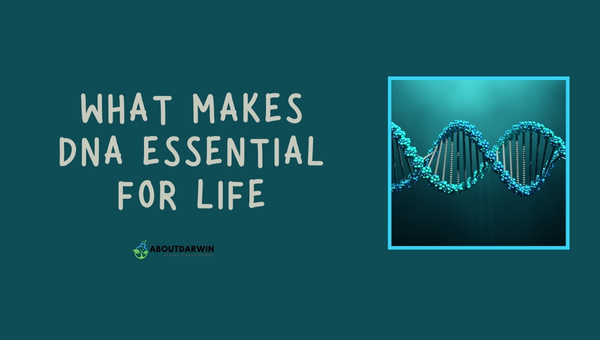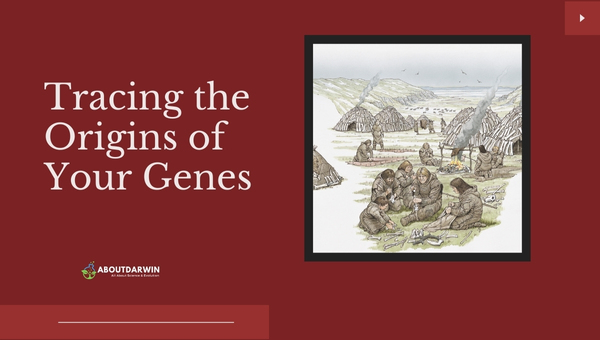Physical Address
304 North Cardinal St.
Dorchester Center, MA 02124
Every living organism has its own unique set of genetic instructions – the blueprint of life. These instructions are encoded in our DNA, which stands for deoxyribonucleic acid. I’ll take you on a journey to explore the fascinating world of DNA and unveil the mystery behind the origin of your genes.
So let’s delve deeper into DNA’s role in the origin and inheritance of your genes and how this knowledge impacts our lives.
Contents
DNA is a crucial component within the cells of all living organisms. It’s made up of long, twisted strands called double helixes, consisting of four building blocks or nucleotides: adenine (A), thymine (T), guanine (G), and cytosine (C).
These nucleotides pair up in specific ways, with A always pairing with T and G pairing with C, forming what’s known as base pairs. Our genes are sections of DNA that carry instructions for creating proteins, which are essential for our bodies to function correctly.
The discovery of DNA dates back to the 19th century. Still, it wasn’t until 1953 when James Watson and Francis Crick proposed the double helix structure of DNA, revolutionizing the field of molecular biology. Today, with advances in DNA analysis techniques, we can sequence genomes, decode our genetic information, and better understand the wonderful world of our genes.
Read: Exploring Archean Eon Timeline: 2.5 Billion Years Ago Recap
DNA is crucial in every aspect of life as the fundamental building block for all living organisms. In this section, I’ll discuss the various factors that make DNA essential to life as we know it.

Firstly, DNA is the biological blueprint that determines an organism’s traits and characteristics. These traits can range from physical features like eye color or hair texture to more complex traits such as the ability to metabolize certain compounds or resist diseases. Without DNA, life would lack the diversity and complexity we observe today.
Another important aspect of DNA is its role in cellular replication. When a cell divides, it must create a copy of its DNA to pass along to the newly formed cells. This replication process ensures that every cell in an organism contains the same genetic information. DNA’s double helix structure allows for accurate replication, ensuring that genetic information is preserved.
Moreover, DNA is essential in synthesizing proteins, the primary building blocks for all living organisms. The information stored in DNA is used to build messenger RNA (mRNA) molecules that serve as templates for protein synthesis. This process, known as transcription, is integral for building and maintaining a living cell’s structure and function.
To provide some insight into the importance of DNA, here are a few key statistics:
| Fact | Number |
|---|---|
| Estimated number of human genes | 20,000-25,000 |
| DNA base pairs in a single human cell | Approximately 3 billion |
| Human DNA shared with chimpanzees | About 99% |
Lastly, DNA has the unique ability to mutate, allowing for the evolution and adaptation of species. Occasionally, a mistake or change occurs during DNA replication, resulting in a mutation.
Some mutations can have detrimental effects, leading to genetic disorders or diseases, while others can create advantageous traits that allow a species to better adapt to its environment. This process, known as natural selection, is a driving force in evolution and biodiversity.
In summary, DNA is essential for life because:
Understanding the role DNA plays in life helps us unravel the mysteries of our own biology and the diverse world around us.
When we talk about DNA, it’s essential to understand how our ancestors shape our genes. In this section, I’ll provide insights into how our genes originated and evolved. By examining DNA, we can track the heritage of individuals and reveal fascinating stories about our past.

To trace the origins of our genes, scientists analyze specific sections of the DNA molecule, particularly the mitochondrial DNA (mtDNA) and the Y-chromosome. These regions are beneficial for tracing ancestry because they’re inherited directly from our mothers and fathers, respectively.
By studying genetic markers within these regions of the DNA, we can determine the haplogroups we belong to. Haplogroups are groups of individuals who share a common ancestor and can be linked to specific geographical locations. This information helps paint a clearer picture of our genetic heritage.
| Haplogroup Type | Inherited From | Purpose |
|---|---|---|
| Mitochondrial | Mother | Traces maternal lineage |
| Y-chromosome | Father | Traces paternal lineage (in males) |
Another approach to tracing our genes is through genome-wide association studies (GWAS). These studies scan entire genomes to identify genetic variations associated with a particular trait, disease, or ancestral origin. Researchers can pinpoint specific DNA markers tied to various ancestries by comparing thousands of individual genomes.
To summarize, genetic technologies have enabled us to unravel our genetic heritage by:
With advancements in genetic research, we’re continually learning more about the origins of our genes, helping us better understand our connection to the people who came before us. Throughout human history, migration and interactions among different populations have shaped our genes, making each of us a unique blend of our ancestors.
It’s clear that DNA, or Deoxyribonucleic Acid, is the foundation of our genetic makeup. This complex molecule is key to our biological inheritance and determines traits ranging from our physical appearance to our predisposition to certain diseases. As we delve deeper into the study of DNA, we continue to unveil incredible insights into genetics and biology.
DNA originates from our parents, with 50% of our genetic material coming from each. It’s this blending of gene information that creates unique individuals with a wide variety of characteristics. However, this doesn’t mean we have access to all the information encoded within our DNA; only particular segments, known as genes, are expressed and utilized at any given time.
DNA research and technology advancements have given us valuable tools to analyze and manipulate these genetic sequences.
Some of these breakthroughs include:
Our understanding of DNA has come a long way since its initial discovery, and our knowledge continues to grow exponentially. We’ve already uncovered extraordinary aspects of our genetic makeup and unlocked the world of genetic modification.
As research progresses, the potential applications in medicine, biology, and our daily lives remain limitless. The fascinating world of DNA offers a glimpse into the very origins of our existence and the depth of our biological potential.